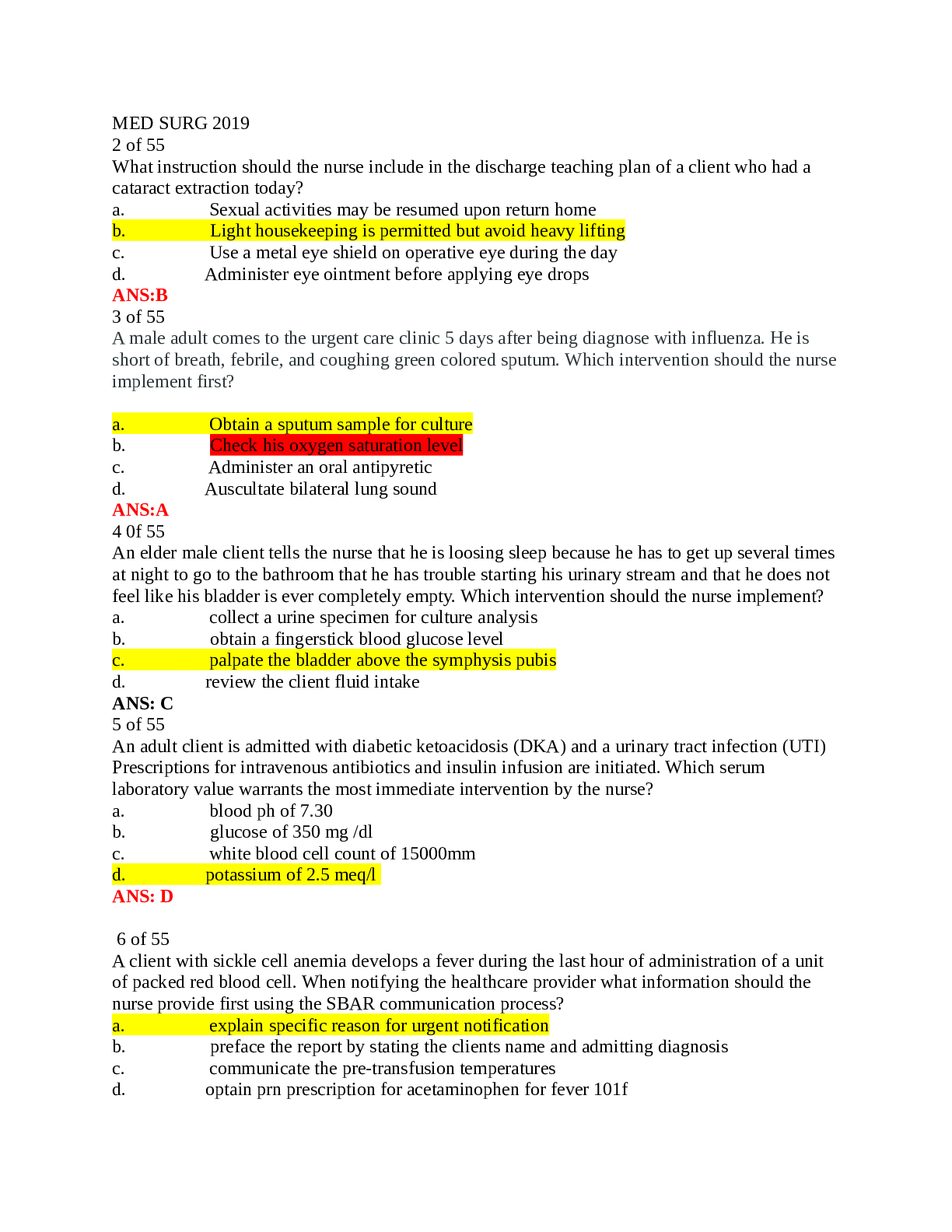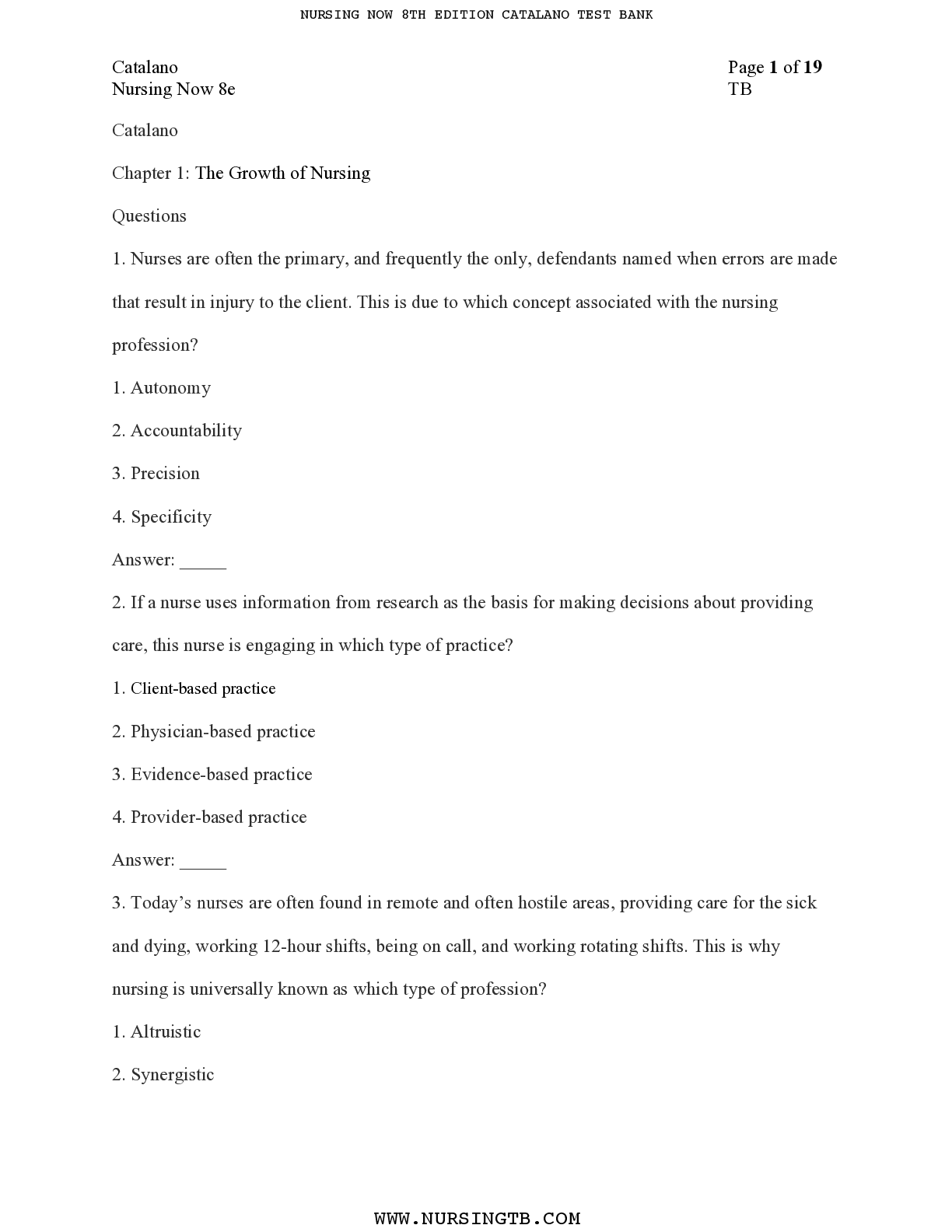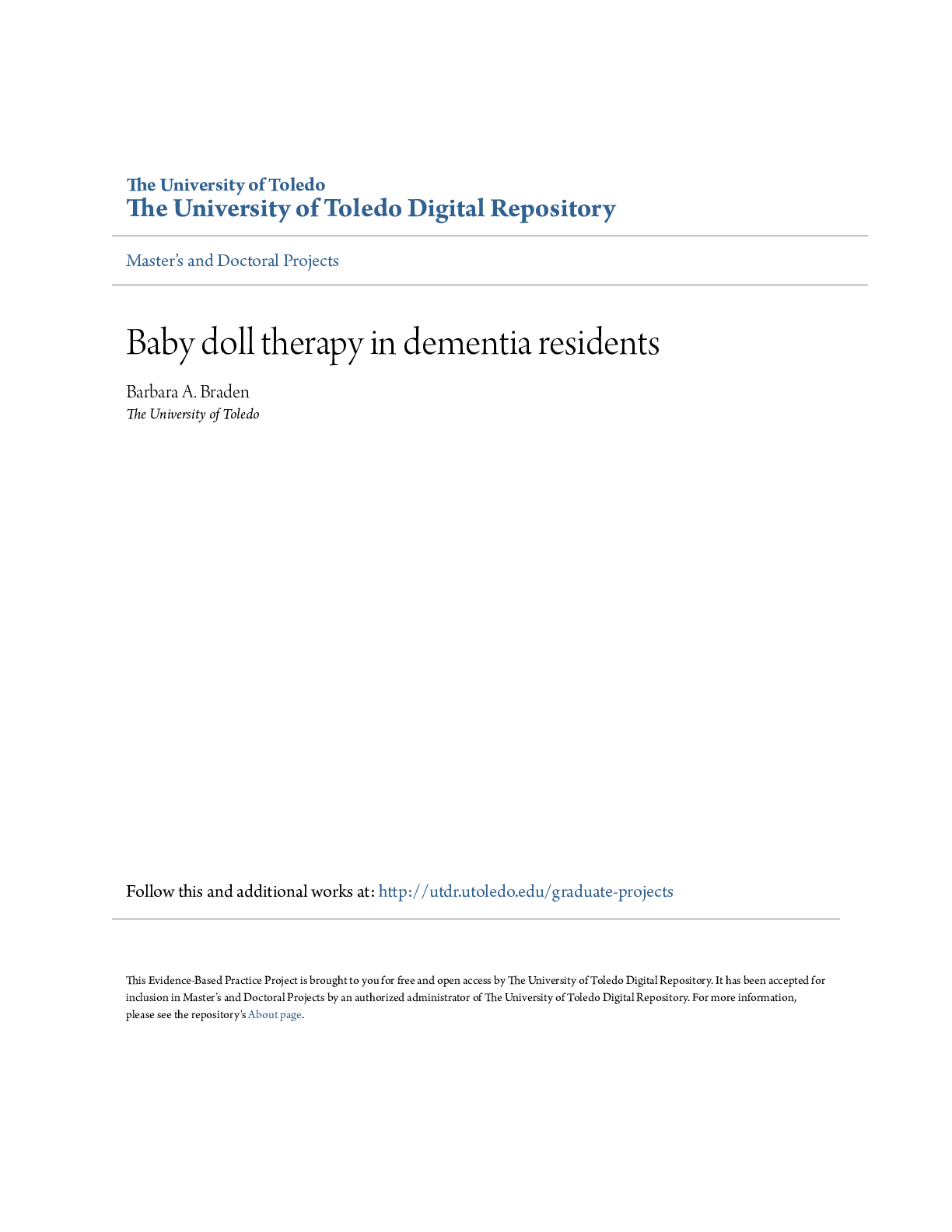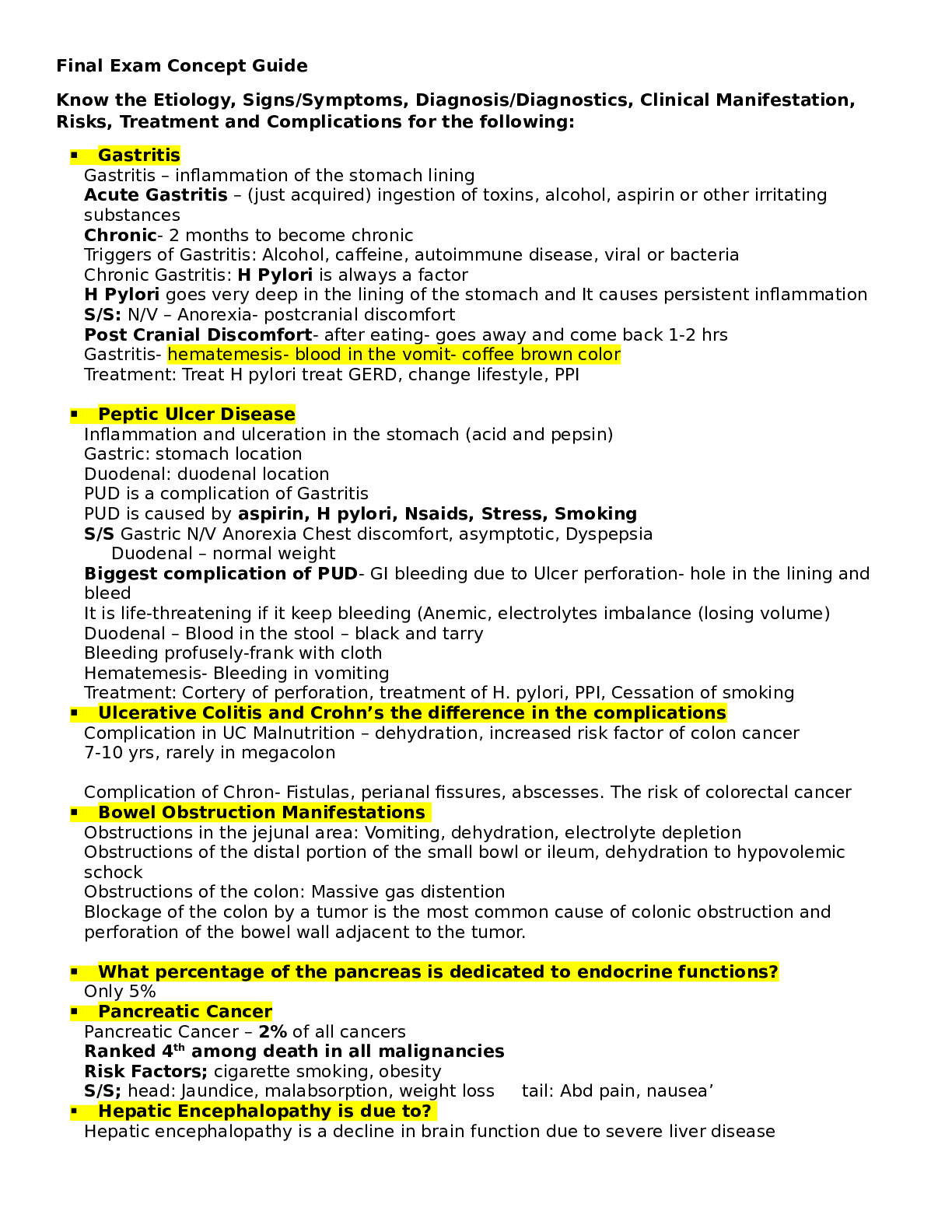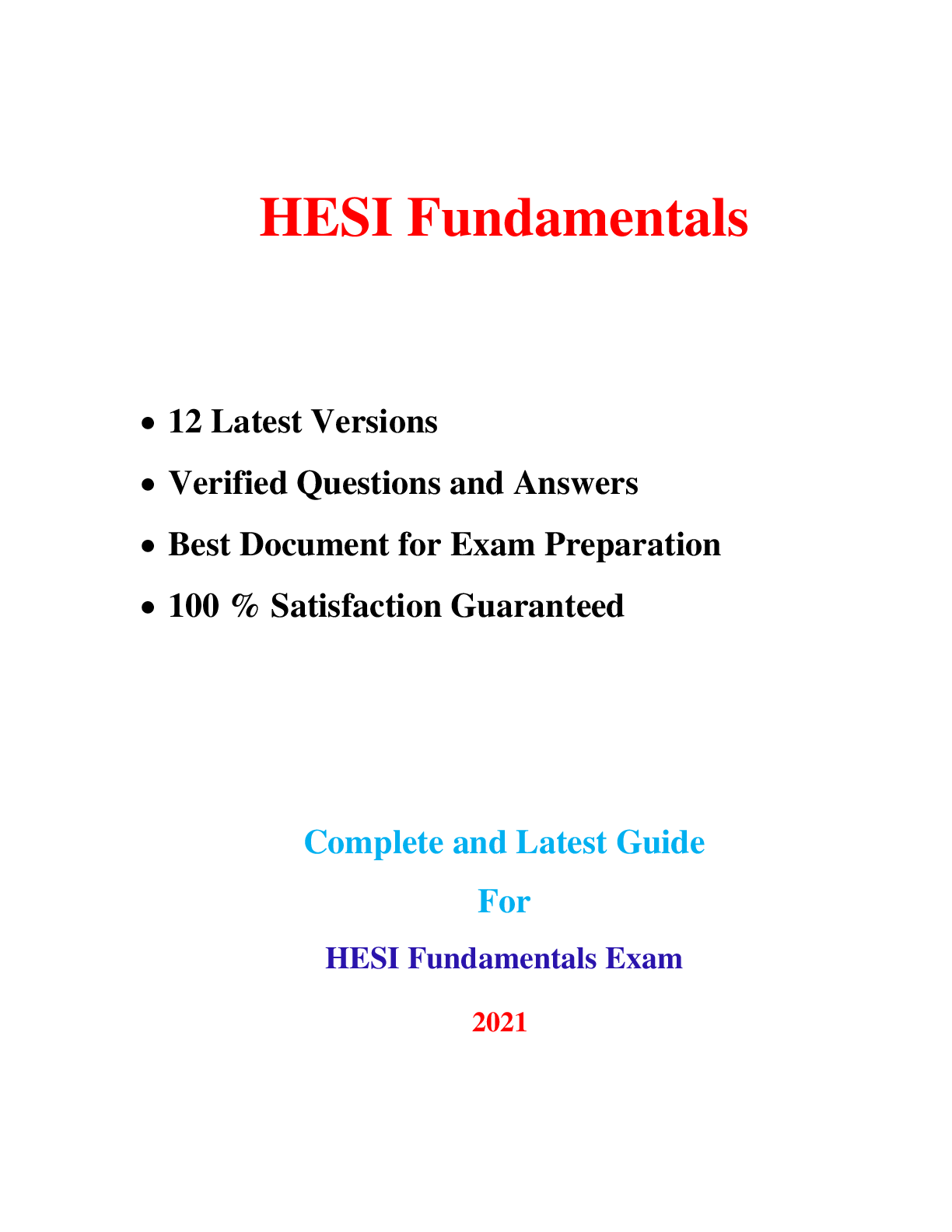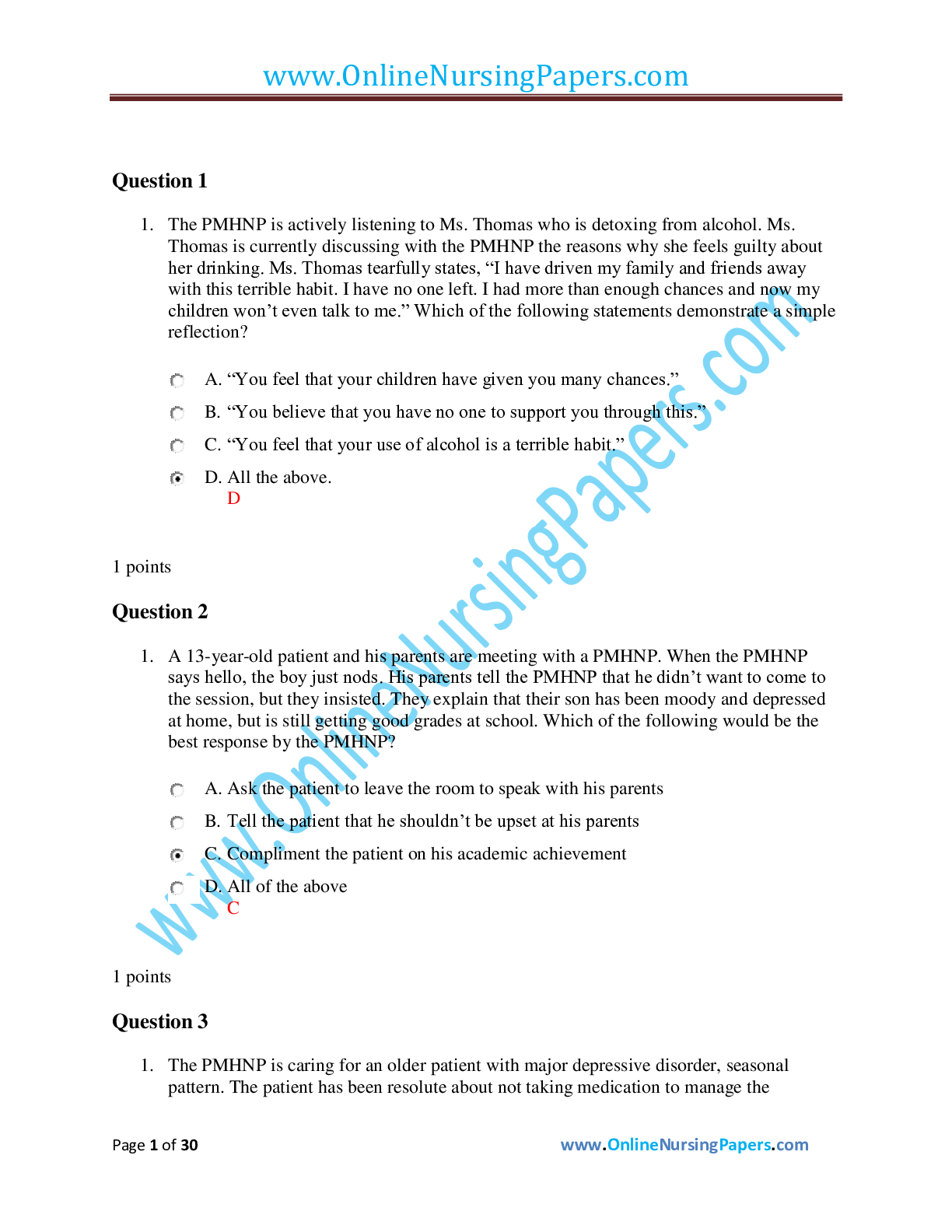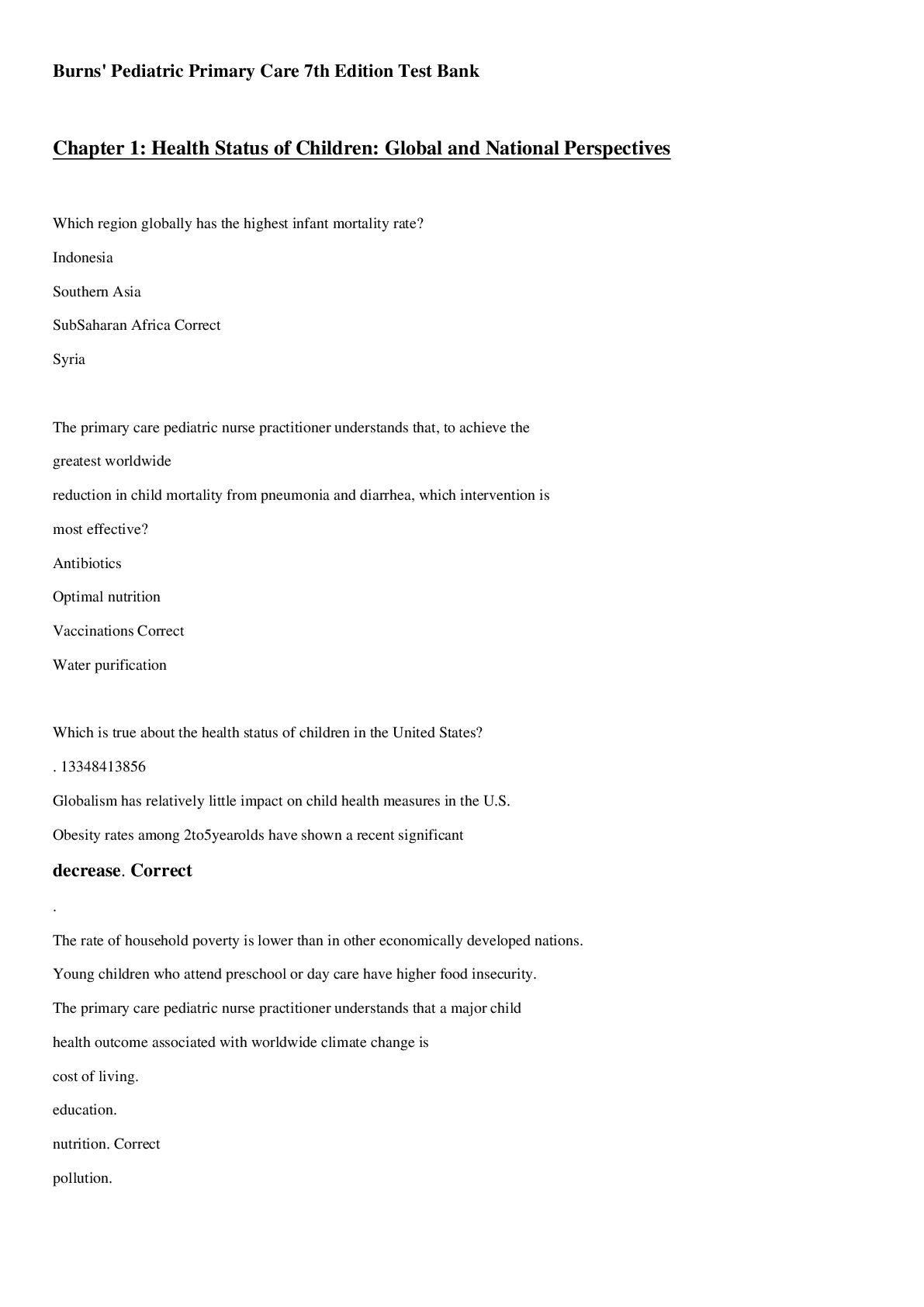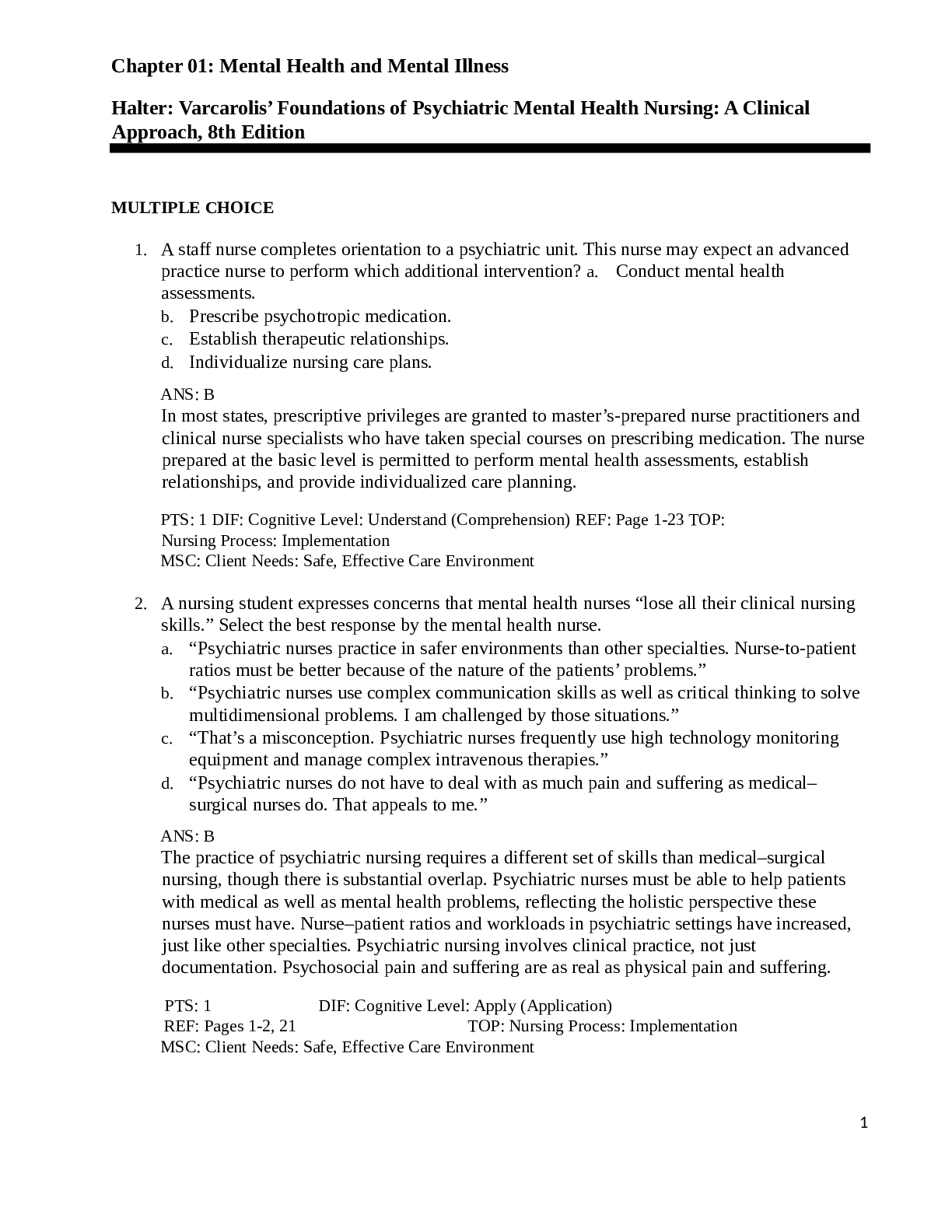Exam (elaborations) ELECTIVE 102(ELECTIVE 102) (ELECTIVE 102(ELECTIVE 102))
Document Content and Description Below
Exam (elaborations) ELECTIVE 102(ELECTIVE 102) (ELECTIVE 102(ELECTIVE 102)) tissue injury that is open and oozing blood. When managing this wound the nurse should: a. pack the wound with antimicrobial... gauze each time the dressing is changed. b. change the dressing each time the blood has oozed through to the outside. c. reinforce the dressing several times before changing it. d. replace the dressing when it is completely saturated. 3. Which of the following organisms most commonly causes community acquired pneumonia in adults? a. haemophilus influenzae b. klebsiella pnemoniae c. streptococcus pneumonia d. staphylococcus aureus 4. A nurse, while doing a physical assessment shines a light into a client’s right eye and notes pupillary constriction in the left eye. The nurse should chart this response as a. Pupillary convergence b. Accommodation c. A consensual reaction d. A direct reaction 5. When informed consent is obtained from the client or family, the explanation of the surgical or emergency procedure, possible risks, complications and alternatives is the responsibility of the a. Anesthesiologist b. Admission clerk c. Surgeon or specialist d. Registered nurse 6. Evaluation of an elderly client first day postoperative reveals a temperature of 100.6◦F. which of the following actions should the nurse take first? 7. A nurse is caring for a client with chest-tube drainage system. The nurse notes constant bubbling in the suction control chamber. Which of the following nursing actions is most appropriate? 8. When auscultating a client’s lungs, you hear crackles. These are caused by: 9. The nurse knows that when a client has a tracheostomy tube with a high-volume, low pressure cuff, it is used primarily to prevent: 10. A 50-year-old client who has an IV infusing, an epidural drip, and a chest tube attached to the wall suction needs to have a bowel movement but does not want to use the bedpan. Which of the following actions by the nurse would be most appropriate? 11. The nurse in the emergency department is notified that a person, who sustained a gunshot wound to the right side of the chest, will arrive soon. The nurse should plan to: 12. Which of the following pieces of equipment should a nurse have available when caring for a client who has bleeding esophageal varices? 13. – 15. BONUS MECHANICAL VENT. 16. A client is placed on a ventilator. Because hyperventilation can occur when mechanical ventilation is used, the nurse should monitor the client for signs of: 17. Which ABG analysis results would you expect to find in a client with acute respiratory failure? 18. A client respiratory status necessitates endotracheal intubation and positive pressure ventilation. The most immediate nursing intervention for this client at this time would be to: 19. A client is on a ventilator. One of the nurses asks what should be done when condensation resulting from humidity collects in the ventilator tubing. The best response to this question would be to: 20. Which of the following findings should concern the nurse that the oxygen saturation monitor is not working? 21. A client with a pulmonary embolus is intubated and placed on mechanical ventilation. When suctioning the endotracheal tube, the nurse should: 22. A client who is admitted with emphysema has a PCO2 of 60. The nurse, noting this is excessively high, calls the physician to obtain an order for: 23. The nurse knows that when a client has a tracheostomy tube with a high-volume, low-pressure cuff, it is used primarily to prevent: 24. When caring for a client who is receiving mechanical ventilation with positive end-expiratory pressure (PEEP), which of the following blood test results would indicate to a nurse that the treatment is having the desired effect? 25. a client is intubated and receiving mechanical ventilation. The primary health care provider has added 7 cm of positive end-expiratory pressure (PEEP) to the client’s ventilator settings. The nurse should assess for which expected but adverse effect of PEEP? 26. A three-year-old child who experienced a head trauma and is receiving mechanical ventilatio... [Show More]
Last updated: 2 years ago
Preview 1 out of 17 pages
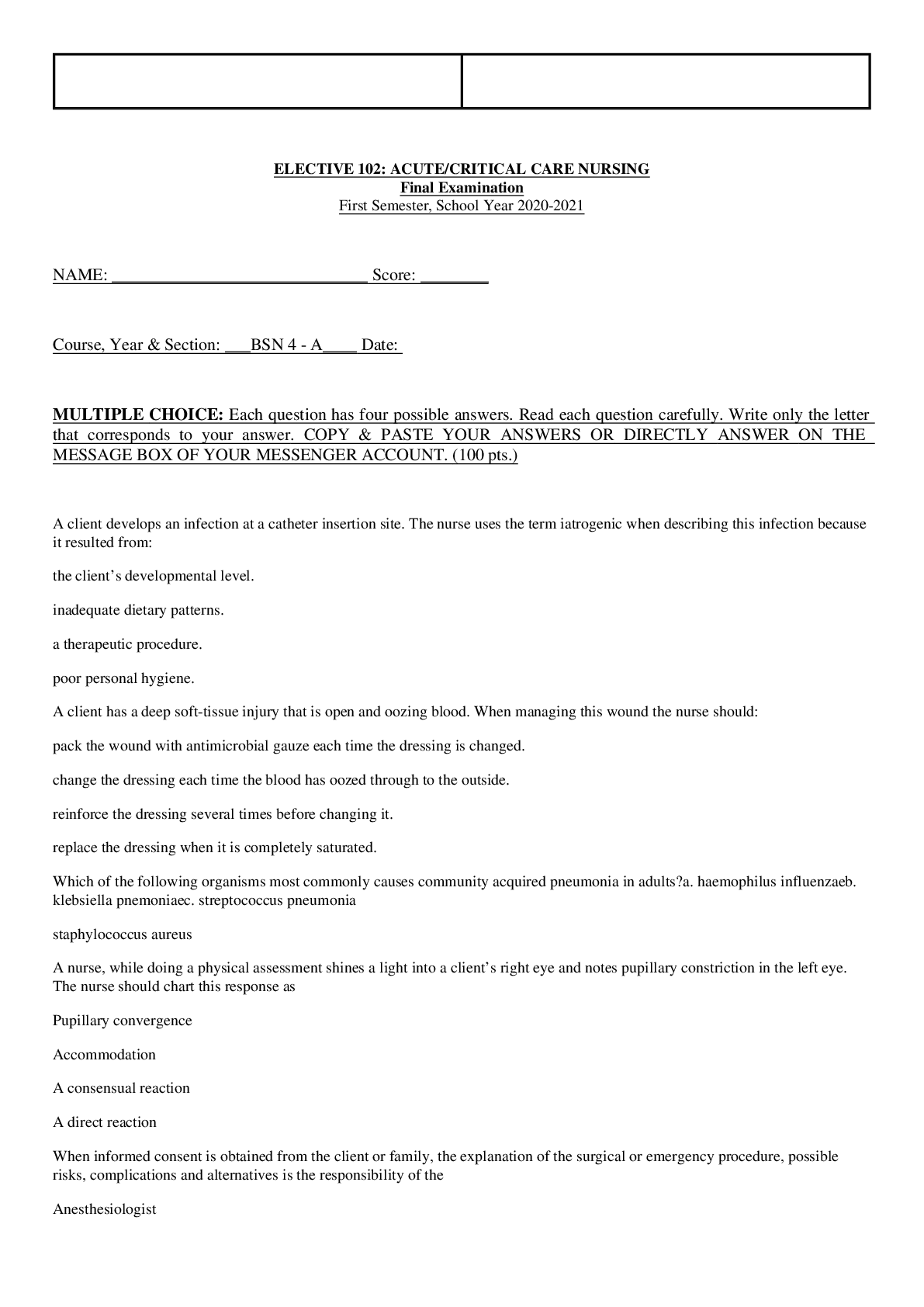
Buy this document to get the full access instantly
Instant Download Access after purchase
Buy NowInstant download
We Accept:

Reviews( 0 )
$13.50
Can't find what you want? Try our AI powered Search
Document information
Connected school, study & course
About the document
Uploaded On
Mar 02, 2021
Number of pages
17
Written in
Additional information
This document has been written for:
Uploaded
Mar 02, 2021
Downloads
0
Views
114


